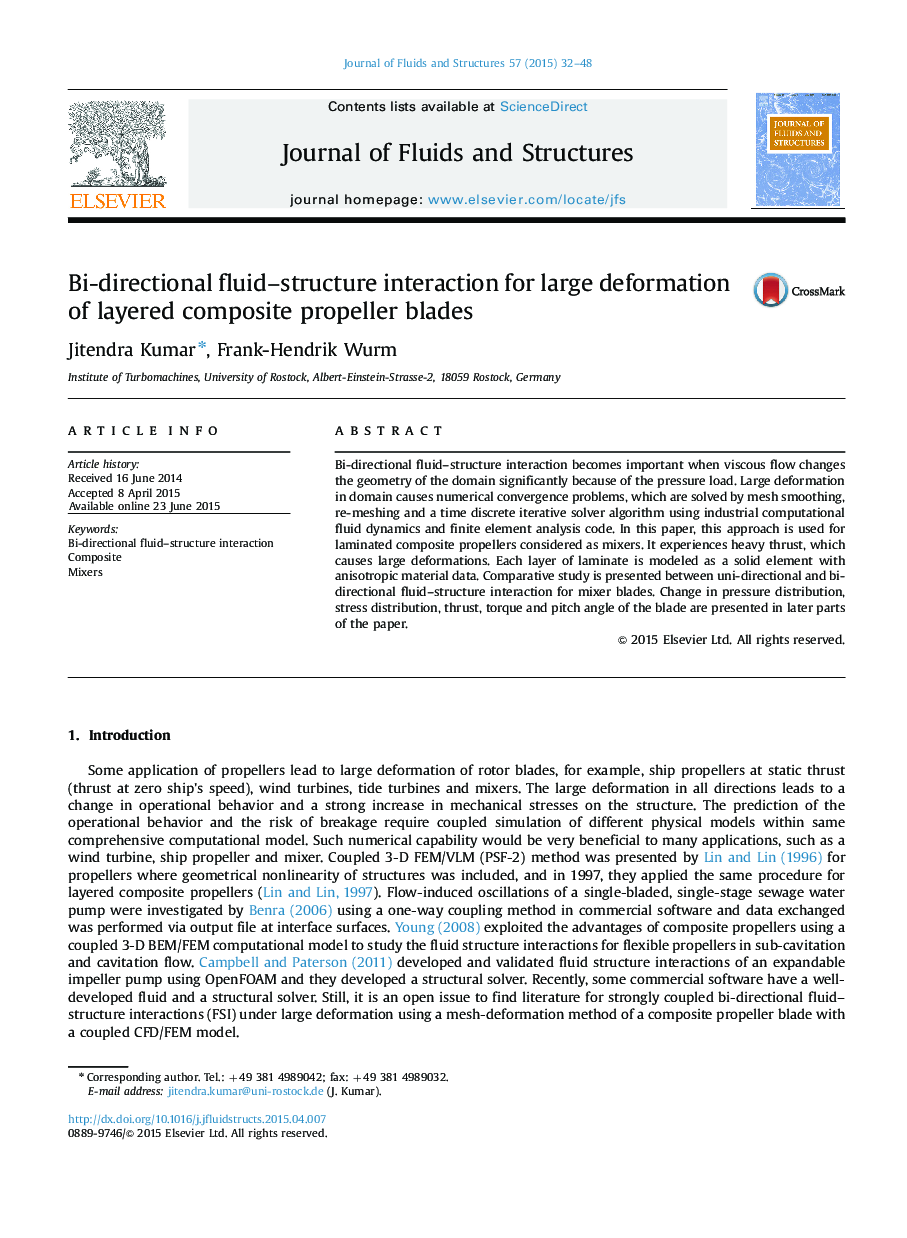| Article ID | Journal | Published Year | Pages | File Type |
|---|---|---|---|---|
| 792598 | Journal of Fluids and Structures | 2015 | 17 Pages |
•Fluid–structure interaction is modeled for large deformation of composite blade.•Uni-directional FSI over predicts blade deformation in contrast to the bi-directional FSI.•Gamma–Theta turbulence model predicts thrust on the blade nearest to the experimental value.•The pitch of the blade changes up to 3°, which causes decrease in thrust.•Dynamic behavior of blade in fluid domain could be predicted by bi-directional FSI.
Bi-directional fluid–structure interaction becomes important when viscous flow changes the geometry of the domain significantly because of the pressure load. Large deformation in domain causes numerical convergence problems, which are solved by mesh smoothing, re-meshing and a time discrete iterative solver algorithm using industrial computational fluid dynamics and finite element analysis code. In this paper, this approach is used for laminated composite propellers considered as mixers. It experiences heavy thrust, which causes large deformations. Each layer of laminate is modeled as a solid element with anisotropic material data. Comparative study is presented between uni-directional and bi-directional fluid–structure interaction for mixer blades. Change in pressure distribution, stress distribution, thrust, torque and pitch angle of the blade are presented in later parts of the paper.
Graphical abstractFigure optionsDownload full-size imageDownload as PowerPoint slide
